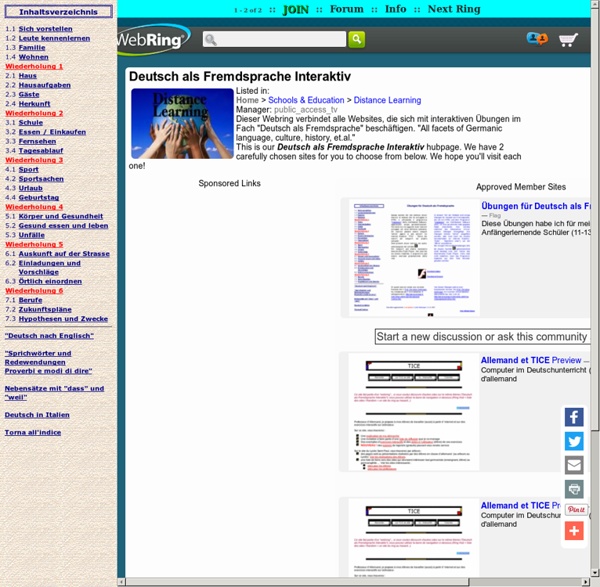



Toms Deutschseite - Hilfestellung beim Erlernen der deutschen Sprache Toms Deutschseite - Konjugation der Verben Aim of this section is to bring any verb in the correct form in the present tense: In English it's quite easy. You just have to add a "s" for "he/she/it" and for the rest you can take the infinitive. In German there is a different ending for almost every person. There are three groups of verbs: group A: verbs which follow a strict patterngroup B: verbs which follow a strict pattern with slight exceptionsgroup C: verbs which don't follow any pattern group A: verbs which follow a strict pattern Fortunately, most verbs follow a strict pattern which is easy to remember: For "wir" and "sie" (plural) just use the infinitive without any modification. group B: verbs which follow a strict pattern with slight exceptions Verbs of group B follow the same rules as group A but for some verbs slight modifications are necessary: group C: verbs which don't follow any pattern A group of verbs don't follow any rule and their forms have to be learned by heart. Verben im Präteritum (Imperfekt)
Wo, Woher, Wohin > Useful: Contact us | Best resources | Most popular | All our lessons & exercises > German lessons & exercises: Abbreviations and acronyms... | Adjectives | Adverbs | Alphabet | Animals | Articles | Audio test | BE | BE, HAVE, DO, DID, WAS... | Banks, money | Bilingual dialogues | Business | Buying in a shop | Capital letters | Cars | Celebrations: Thanksgiving, new year... | Clothes | Colours/Colors | Comparisons | Compound words | Conditional and hypothesis | Conjunctions | Countries and nationalities | Dates, days, months, seasons | Dictation | Direct/Indirect speech | Diseases | Exclamative sentences! | Our German lessons and tests are 100% free but visitors must pay for Internet access.
Deutsche Grammatik 2.0 — Deutsche Grammatik besser verstehen 9 Cool German Grammar Lessons Learned from Listening to Chima It’s pretty much impossible to go one day without hearing music. It’s everywhere: playing in shops, blasting out as someone’s ringtone or booming from a tricked-out car. It gets us psyched for adrenaline-filled action scenes in movies, and it melts our hearts as our favorite television characters confess their undying love for one another. But what if you could use music to help you learn German? Listening to music is great for your language skills: it helps with pronunciation, vocab, idioms and overall fluency. You know how you’ve had the chorus of “Let it Go” stuck in your head for weeks? Now imagine you’d had the German version in your head all that time. By the way, FluentU has a great video of “lass es los” – find it here. But it’s not just vocab that you can learn from listening to German music. 9 Cool German Grammar Lessons Learned from Listening to Chima Every German song has a whole load of grammar built in – grammar lessons are always just waiting to be learned! Check it out! 1. 2. 3.
Correct Use of German Prepositions There are several ways to express to in German. That means to is not always translated as zu, but can be translated as in, auf, an, nach, zu. Native speakers differentiate exactly where they go and express it with a different preposition. Luckily there are some rules, which are not too hard to remember. Use of Preposition Connected to the Place Imagine visiting some place or going places. When going into buildings, to translates as in. I go to the movies. Use Auf When Going to Institutions When visiting an institution, to mostly translates as auf. I will fly to an island. Difference Between Zu and Nach When traveling to different countries and visiting different cities, to is translated as nach. I go to Germany. The preposition zu is used to express to when visiting people or stores, buildings with a recognizable name. I go to my friend. Three Most Important Prepositions Remember that Germans use many different prepositions to express to.
Languages - German - Talk German - Introductions German Language Resources: Transparencies This page contains grayscale illustrations which can be used in class for instructional purposes. Two versions of each image are provided as a PDF files. The "Screen Version" displays at 72 dpi (dots per inch) and is a smaller file, which can be used for on-screen viewing. Transparencies Return to German Comments and feedback for Houghton Mifflin Copyright Houghton Mifflin Company. Houghton Mifflin Company is not responsible for the content contained on other Internet Sites.